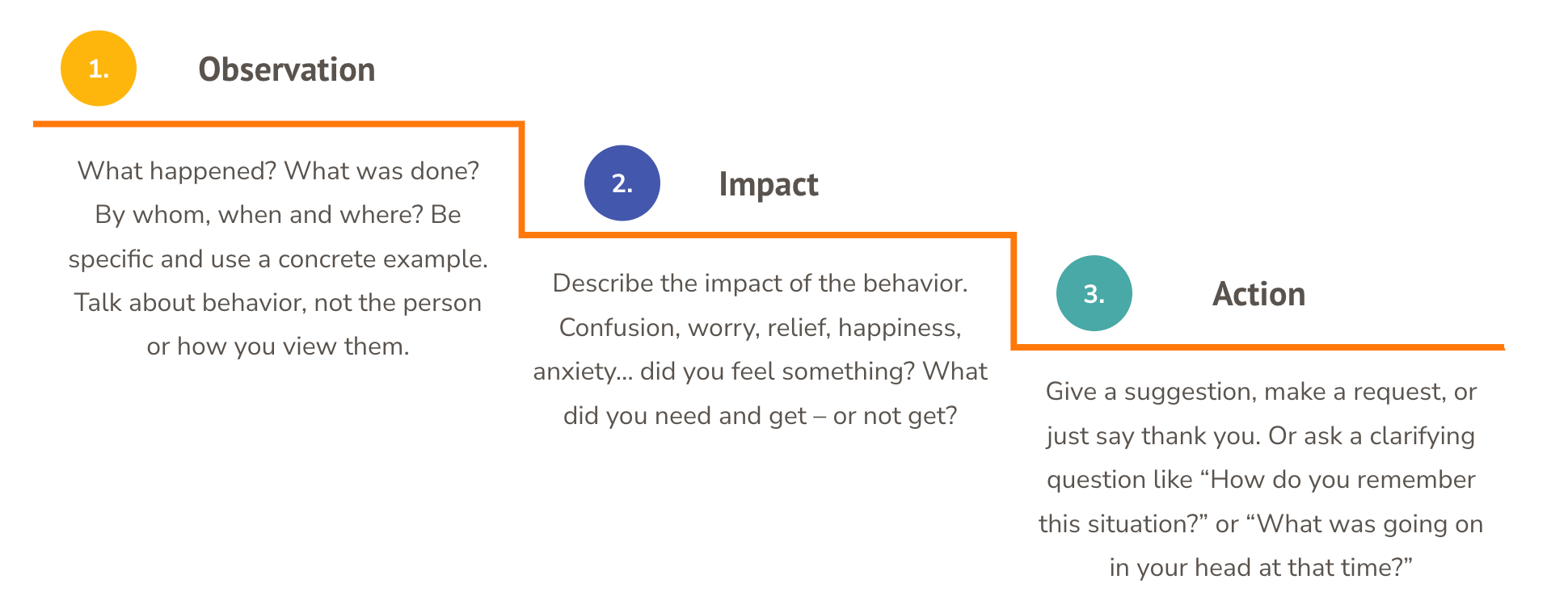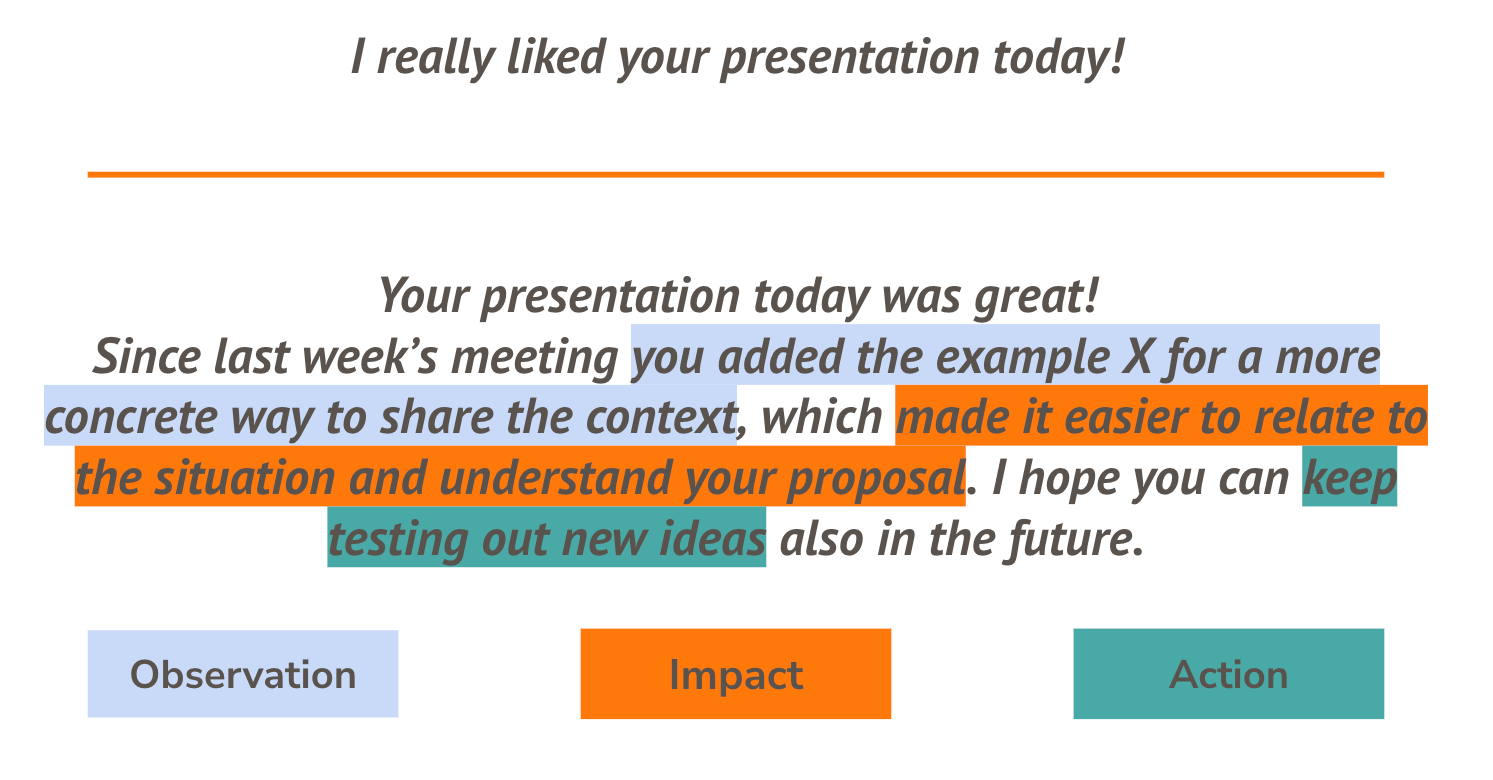Creating a Fair Feedback Model That Works
April 21, 2024Giving feedback is a challenge for all of us at times. You often need to share correction or constructive criticism, but you don’t want to do anything that demoralizes the recipient, risks your relationship, or causes disengagement. Is there a recipe for perfect feedback?
After extensive research into feedback approaches, we’ve discovered that combining elements from proven frameworks creates the most practical and fair feedback model. This approach capitalizes on strengths while minimizing weaknesses.
What Are the Two Traditional Feedback Models?
As we reviewed dozens of feedback formulas and feedback tools, we quickly discovered that there were two that stood out above the rest.
The first is Non-Violent Communication, or NVC. The benefits of NVC are that it focuses only on the facts at hand and removes judgment or diagnosis from the equation, leading to common grounds and mutual understanding. The biggest problem, though, is that NVC can be a bit too formal. No one talks that way in real life, so using it in a feedback discussion can be difficult and impractical.
The second feedback model we found most helpful was Situation, Behavior, Impact (SBI). This model makes it easy to share what concerns you have, but it doesn’t leave space for you to talk about what you would like to see happen in the future.
Through our research, we pulled together the best elements of various models and created what we suggest is the recipe for perfect feedback.
The Fair Feedback Model: Observation, Impact, Action (OIA)
The goal is to be both objective and concrete with your input. This helps avoid many of the triggers that cause people to block feedback. We suggest using Observation, Impact, Action (OIA) as your feedback model.

Start by making a factual observation about what happened. Be specific and use concrete examples, so the recipient understands what concerns you are bringing up. Focus on behavior without any comments on the individual or your views of them.
Next, talk about the impact of the behavior. How did it make you feel? How does it impact the team or organization? Did you or others need something you didn’t receive? You should only speak on behalf of others if you’re in a leadership role and others have expressed concerns to you that you need to address.
Finally, make a request or give a suggestion about how to improve the behavior in the future. That way, the recipient knows precisely what they can change so things will be better going forward.
Here’s an example of how different a well-formatted, actionable feedback can look compared to a common form of praise.

Reinforcing and Redirecting Feedback
Remember that the purpose of feedback should be to improve or applaud, never to judge or punish. That means you should make sure you’re giving both reinforcing and redirecting feedback regularly, and reinforce especially when someone has improved their behaviour based on your earlier feedback. Colleagues and employees can get frustrated and disengage if they only receive criticism, no matter how it’s phrased.
Focus on ways people are doing things right, and reinforce the behavior you appreciate. The OIA model works well for positive feedback as well as correction.
Improve Your Leadership Through Better Feedback
The OIA model helps you deliver more effective feedback, making you a better colleague and leader. Teamspective’s Leadership Enablement Platform supports this approach with practical tools that make feedback easier and more consistent.
Our solution combines Engagement, Performance, and Collaboration insights into a single platform. By integrating Organizational Network Analysis with engagement and performance data, Teamspective adds a crucial dimension to organizational development.
Through AI assistance, Teamspective helps leaders prioritize issues, provide timely guidance, and take consistent action based on relevant data. The platform connects directly to your communication tools (Slack, Teams), ensuring minimal friction and higher response rates.
Create your personal Teamspective account at no cost and gain access to guidance when giving and requesting feedback.
If you lead a team, contact us today to learn how Teamspective can help every leader in your organization proactively enhance employee engagement, performance, and collaboration.
Want to learn more about feedback? See our Ultimate Feedback Guide!



